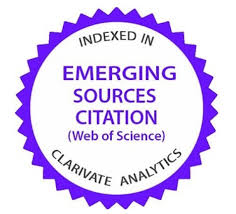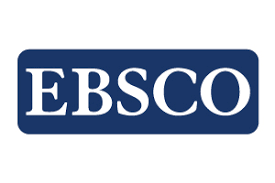Possibilities for educational use of YouTube
DOI:
https://doi.org/10.35197/rx.12.01.e3.2016.34.mrKeywords:
web tools 2.0, YouTube, computer mediated communication, educationAbstract
Under the theoretical framework built for Computer Mediated Communication, through documentary research, various contributions on YouTube were reviewed in order to identify the educational opportunities it offers. The result distinguishes it as an asynchronous, transmissive and interactive means of communication; classified to share videos and create communities around shared resources. The educational research collected in this study highlights its usefulness as a teaching tool for content management, the creation of learning communities and the development of learning skills for searching, selecting, storing and evaluating audiovisual representations of own or foreign authorship.
Downloads
References
Bentolila, S. & Clavijo, P. (2001). La computadora como mediador simbólico de aprendizajes escolares. Análisis y reflexiones desde una lectura vigotskiana del problema. Fundamentos en Humanidades, 2(3), 77-101.
Berk, R. (2009). Multimedia teaching with video clips: TV, movies, YouTube, and mtvU in the college classroom. International Journal of Technology in Teaching and Learning, 5(1), 1-21.
Bonk, C. (Marzo de 2008). YouTube anchors and enders: The use of shared online video content as macrocontext of learning. Trabajo presentado en el Encuentro Anula 2008 de la Asociación Americana de Investigación Educativa (AERA), New York, NY.
Bowler, G. (2010). Netnography: A Method Specifically Designed to Study Cultures and Communities Online. The Qualitative Report, 15(5), 1270-1275.
Burke, S. & Snyde, S. (2008). YouTube: An Innovative Learning Resource for College Health Education Courses. International Electronic Journal of Health Education, 11, 39-46.
Chenail, R. (2008). YouTube as a Qualitative Research Asset: Reviewing User Generated Videos as Learning Resources. The Weekly Qualitative Report, 4, 18-24.
Cheng, X., Cameron, D. & Liu, J. (25 de julio de 2007). Understanding the Characteristics of Internet Short Video Sharing: YouTube as a Case Study. arXiv. Recuperado de http://arxiv.org/pdf/0707.3670.pdf
Duffy, P. (2008). Engaging the YouTube Google-Eyed Generation: Strategies for Using Web 2.0 in Teaching and Learning. The Electronic Journal of e-Learning, 6(2) 119 - 130.
Gómez, E., Arvizu, C. & Galindo, A. (2005). Apuntes de la realidad como marco teórico para el estudio de la comunicación mediada por computadora. Investigación Social, 2(3), 159-174.
Higher Ed Live. (12 de abril de 2011). Where YouTube EDU Went Wrong (and how it might recover). Digital development Professional empowerment. Recuperado de http://higheredlive.com/where- youtube-edu-went-wrong-and-how-it-might-recover/
Khan, S. (2011). Khan Academy. Recuperado de http://www.khanacademy.org/
Mayoral, P., Tello, A. & González, J. (2010). YouTube Based Learning. Facing the Challenges – Building the Capacity, FIG Congress 2010, Sydney.
Minguel, M. (2000). Interactividad e interacción. Revista Latinoamericana de Tecnología Educativa, 1(1), 25-32.
Open Cultura. (2009, 26 de marzo). Introducing YouTube EDU! Recuperado de http://www.openculture.com/2009/03/introducing_youtube_edu.html
Orihuela, J. (2002). Nuevos paradigmas de la comunicación. Revista Latinoamericana de Comunicación, Chasqui, marzo, núm. 077. Recuperado de http://www.redalyc.org/pdf/160/16007702.pdf
Perera, V. & Torres, J. (2005). Una aproximación al estado actual de las investigaciones sobre la comunicación mediada por ordenador en el ámbito educativo. Trabajo presentado en el V Congreso Internacional Virtual de Educación. Sevilla. España: Facultad de Ciencias de la Educación, Universidad de Sevilla.
Quiroga, N. (2011). Blogs de historia: usos y posibilidades. Historia Crítica, núm. 43, enero-abril, pp. 62- 80.
Quirós, E. (2009). Recursos didácticos digitales: medios innovadores para el trabajo colaborativo en línea.
Electrónic@ Educaré, 13(2), 47-62.
Ramírez, M. I. (2016). La investigación comunicativa de la comunicación mediada por computadora.
Multiversidad Management, febrero-marzo, pp. 36-41.
SCOPEO (2009). Formación Web 2.0, Monográfico SCOPEO, nº 1. Recuperado de http://scopeo.usal.es/images/documentoscopeo/scopeom001.pdf
Siles, I. (2008). A la conquista del mundo en línea: internet como objeto de estudio 1990-2007.
Comunicación y sociedad, núm. 10, julio-diciembre, pp. 55-79.
Siles, I. (2005). Comunidades en línea, comunicación y tecnología en la emergencia de colectivos mediáticos. Revista de Ciencias Sociales, 3-4(109-110), 127-137.
Snelson, C. & Elison-Bowers, P. (2009). Using YouTube videos to engage the affective domain in e- learning. Research, Reflections and Innovations in Integrating ICT in Education, vol. 3, 1481-1485.
Sysomos Inc. (febrero de 2010,). Inside YouTube Videos. Exploring YouTube videos and their use in blogosphere. Recuperado de http://sysomos.com/reports/youtube-video-statistics
Tobón, Sergio (2014). Estrategias didácticas para la formación de profesores. La Cartografía Conceptual (CC). Trabajo presentado en el IV Congreso Internacional Virtual de Educación (págs. 1-30). Islas Baleares, España: CIBER EDUCA. Recuperado de http://www.cife.edu.mx/index.php/biblioteca- digital/formacion-de-competencias/48-cartografia-conceptual/file
YouTube (11 de diciembre de 2011). Opening up a world of educational content with YouTube for Schools. The official YouTube Blog. Recuperado de http://youtube- global.blogspot.com/2011/12/opening-up-world-of-educational-content.html
YouTube (2015). Estadística. The official web YouTube. Recuperado de http://www.youtube.com/t/press_statistics
YouTube (23 de enero 2012). Holy Nyans! 60 hours per minute and 4 billion views a day on YouTube. The official YouTube Blog. Recuperado de http://youtube-global.blogspot.com/2012/01/holy-nyans- 60-hours-per-minute-and-4.html
YouTube (25 de marzo de 2010). More courses, more colleges: YouTube EDU turns one. The official YouTube Blog. Recuperado de http://youtube-global.blogspot.com/2010/03/more-courses-and- more-colleges-youtube.html
YouTube (27 de marzo de 2009). Higher Education for All. The official YouTube Blog. Recuperado de http://youtube-global.blogspot.com/2009/03/higher-education-for-all.html
Downloads
Published
How to Cite
Issue
Section
License
Copyright (c) 2016 María Isabel Ramírez Ochoa

This work is licensed under a Creative Commons Attribution-NonCommercial 4.0 International License.
Usted es libre de:
- Compartir — copiar y redistribuir el material en cualquier medio o formato
- Adaptar — remezclar, transformar y construir a partir del material
- La licenciante no puede revocar estas libertades en tanto usted siga los términos de la licencia
Bajo los siguientes términos:
- Atribución — Usted debe dar crédito de manera adecuada , brindar un enlace a la licencia, e indicar si se han realizado cambios . Puede hacerlo en cualquier forma razonable, pero no de forma tal que sugiera que usted o su uso tienen el apoyo de la licenciante.
- NoComercial — Usted no puede hacer uso del material con propósitos comerciales .
- No hay restricciones adicionales — No puede aplicar términos legales ni medidas tecnológicas que restrinjan legalmente a otras a hacer cualquier uso permitido por la licencia.








